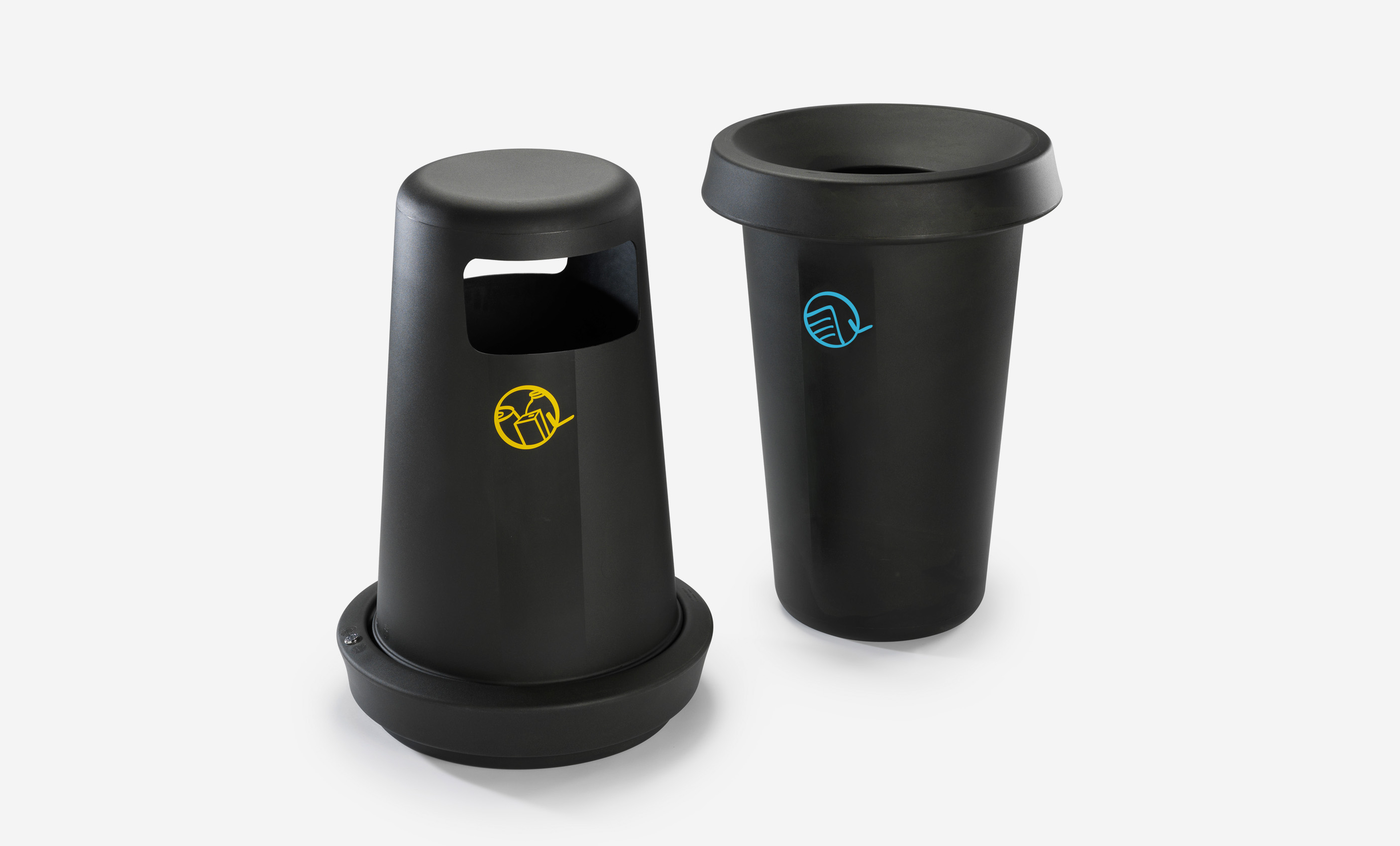When we designed the Giro waste container, we took special consideration to efficiency. Giro is made of 100% recycled and recyclable rotational polyethylene forming two pieces joined by a screw. The optimization of its design allows three different versions from one single mold.

Good design should not only consider efficiency but also the entire chain of agents involved in the development, manufacturing, transportation, and commercialization of objects. People responsible for its maintenance, updating, or recycling.
In the The Rider, by Bart Van der Leck, designer, painter, ceramist, and one of the members of Dutch neoplasticism, we discover a series of geometric shapes rendered in two colors, black and yellow, distributed on a white canvas. Observing the painting, we perceive these geometric shapes, and yet, through them, we interpret the representation of a rider on a horse.
The work helps us to understand that perception is an active process of interpretation that we develop through interaction with the world through our senses. And that the reality, which Anil K. Seth calls a "controlled hallucination," is nothing more than a cognitive projection that our brain builds being provided by environment signals.
We could consider that these signals are organized into networks of relationships that constitute devices, which, according to Foucault, respond to urgencies and have a strategically dominant function. Their nature is shaped by power relations that inscribe them in a power game.
Projecting implies rethinking this complex network of relationships. Design should not be an external contribution but should arise from these relationships to reconsider the dominant, hegemonic, or repressive social logics in which devices are often organized.
Redefining objects and spaces, starting from their materiality, should involve addressing previously established relationships, changing material configurations from thought or action, revealing the power relations that shape objects. It should involve questioning the essence of devices, avoiding getting trapped in the set of relationships that shape them.
Recognizing the power of things, rethinking our relationship with matter from an ethical perspective, acknowledging objects as active agents within a broad and complex network of relationships, and questioning power dynamics will allow us to design more freely. A significant thing, specially when, as a humans, we start becoming aware of our vulnerability.
cat
es
︎︎︎